Of Chinese Temples and Filipino-Chinese Traditions
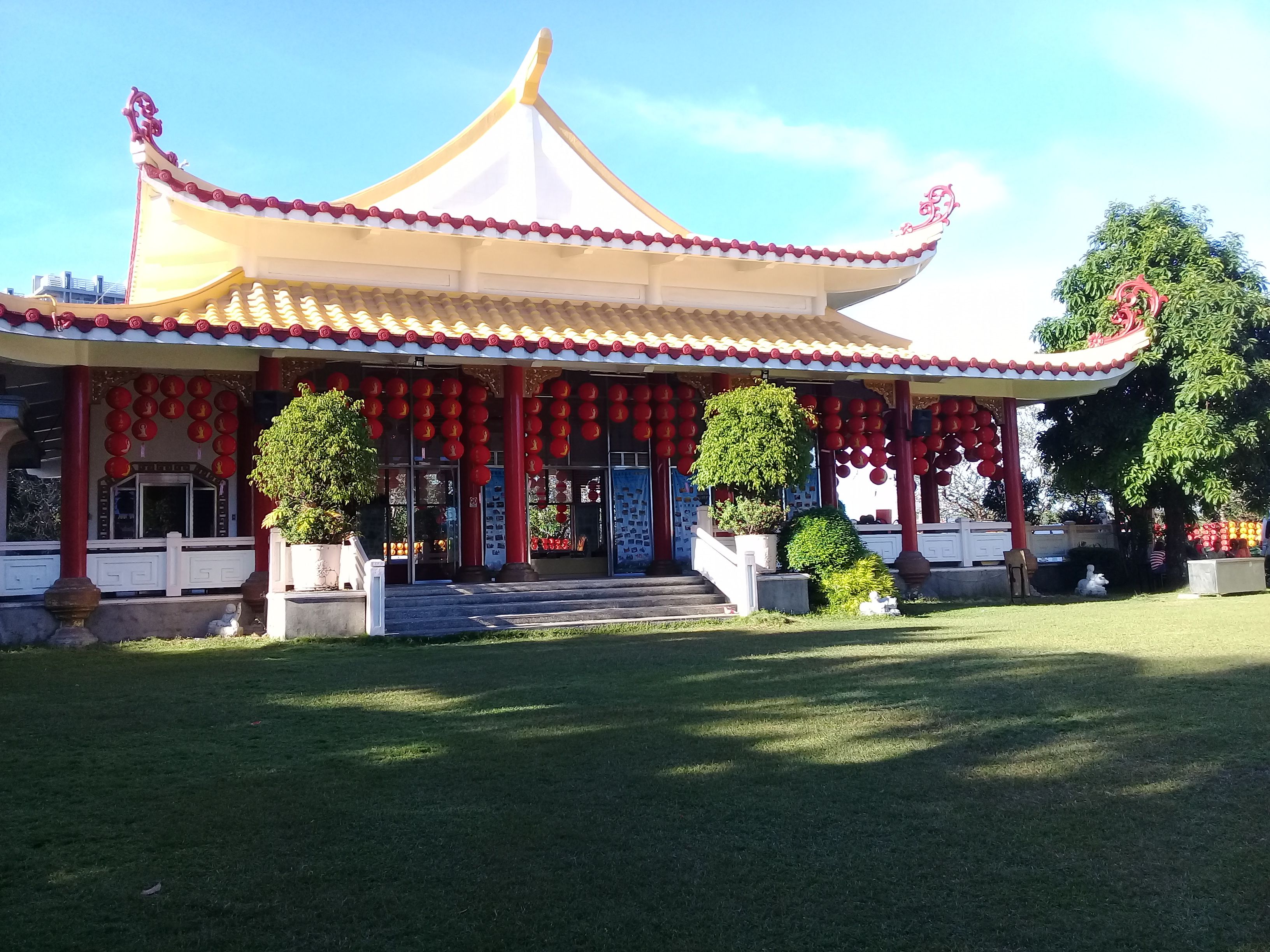
Despite being a largely Catholic country and heavily Westernized, the Philippines is still home to numerous Chinese New Year's celebrations and many Pinoys (slang for Filipino Citizens), or should I say, Chinoys (Filipinos with Chinese blood in their veins), for that matter celebrate this very festive and lively event every year. Infact, the oldest Chinatown around the world also happens to be in Binondo, Philippines. Traditionally, the festive celebrations run for a week where families tend to visit temples to pray and offer their intentions and Chinatowns are bursting with new year sales, honor red envelope coupons and offer discounts.
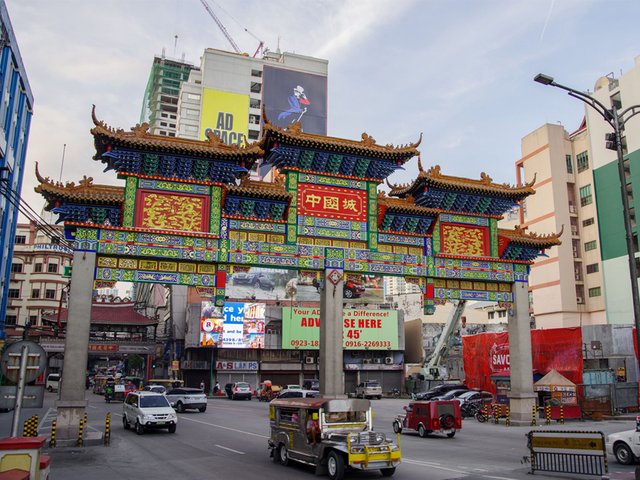
This year, we are ushering in the Year of the Earth Dog. And when you ask me: What did I do during the Chinese New Year? I would say, "Well, visiting Chinese temples of course! Right in the heart of our city."
I am deeply regretful not being able to witness the colorful festivities of the eve of the New Year's. I must say that seeing also the sights and sounds of the new year day itself like the hustle and bustle also of those who came to pray and fellow visitors, more than compensates for my misgivings.
First stop is the Fu Guang Shan Center in Cebu named Chu Un Temple, located at V. Rama Avenue, Cebu City. Fu Guang Shan is an international Chinese Buddhist monastic order and new religious movement which is based in Dashu, Kaoshiung, Taiwan.
When you enter the big red gates you will see rows and rows of red and yellow lanterns with the pattern of Buddha meditating.
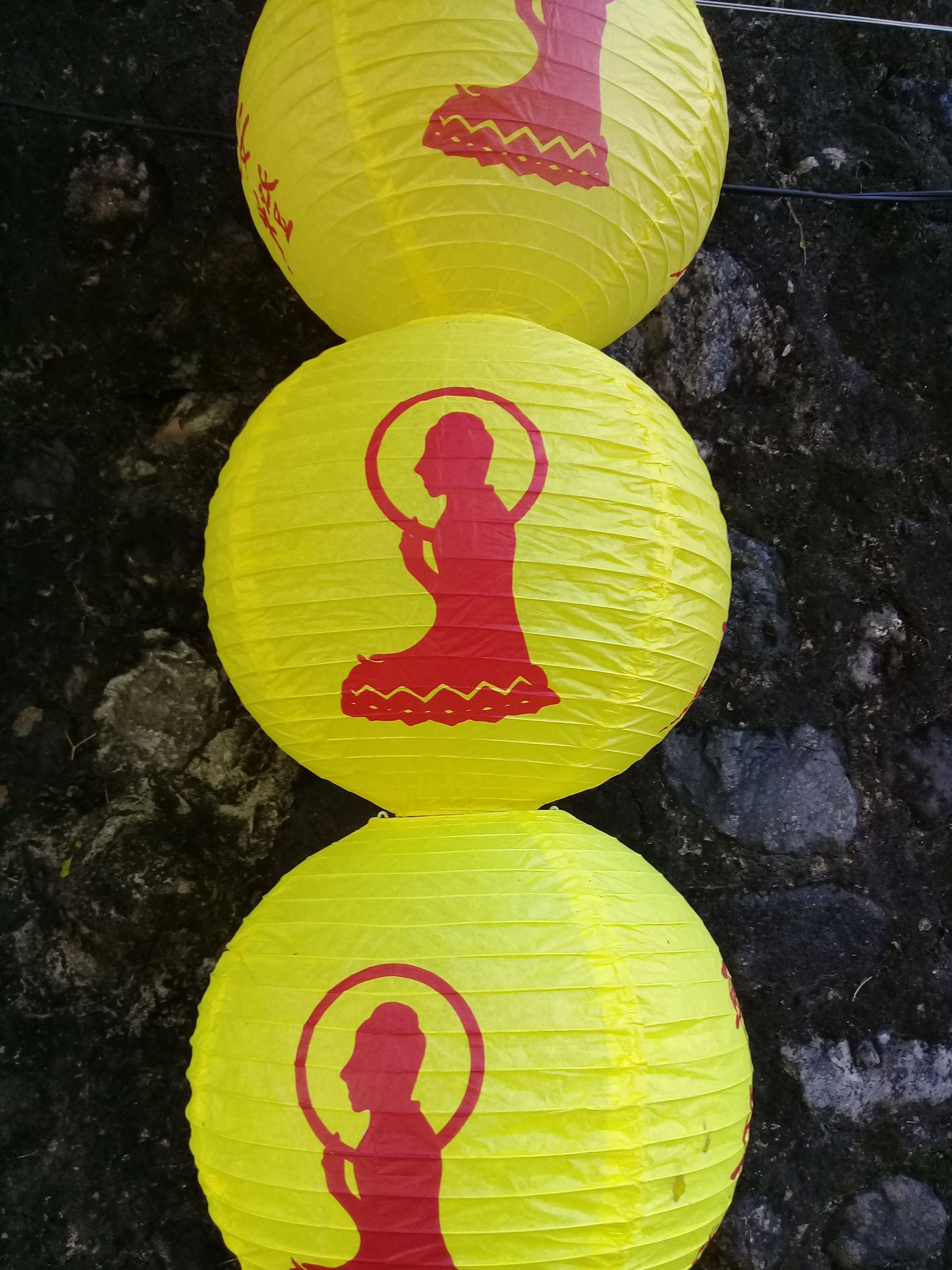
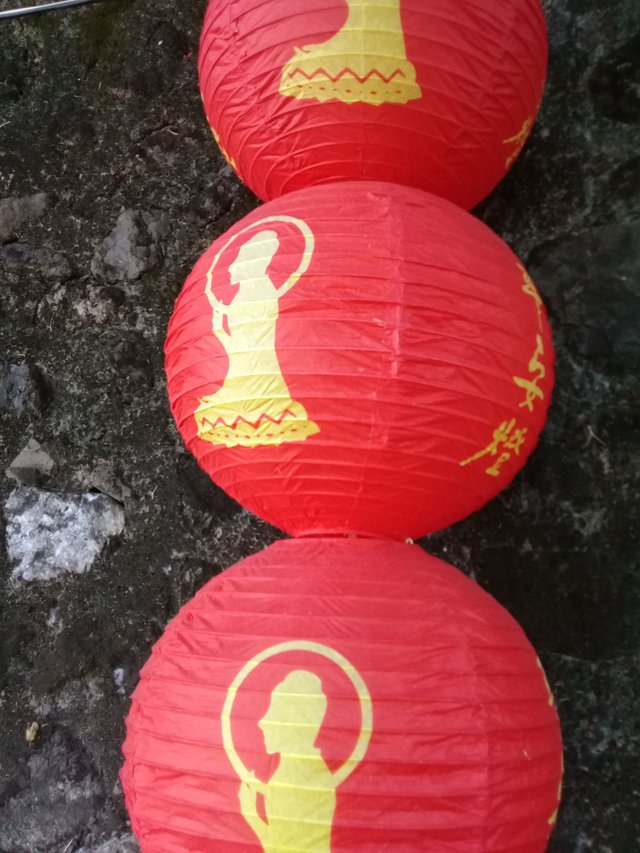
The lanterns go all the way up to the main hall. Some have tags with special characters under them for prayer intentions.
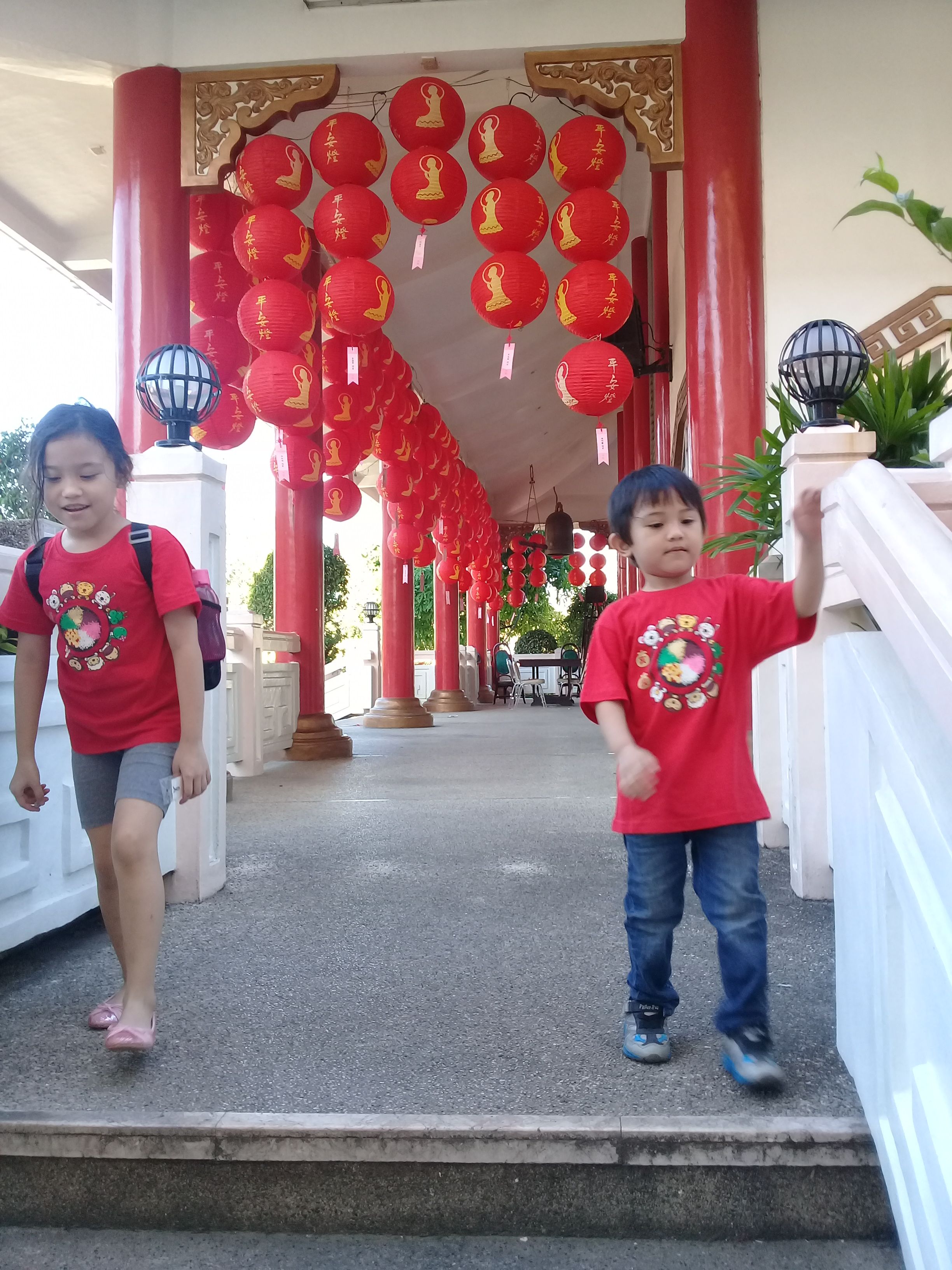
Upon reaching the main hall, you will be able to see the statue of a Chinese lady which serves as a marker for the benefactors / sponsors of the temple. Beside the statue is the famed fortune tree.
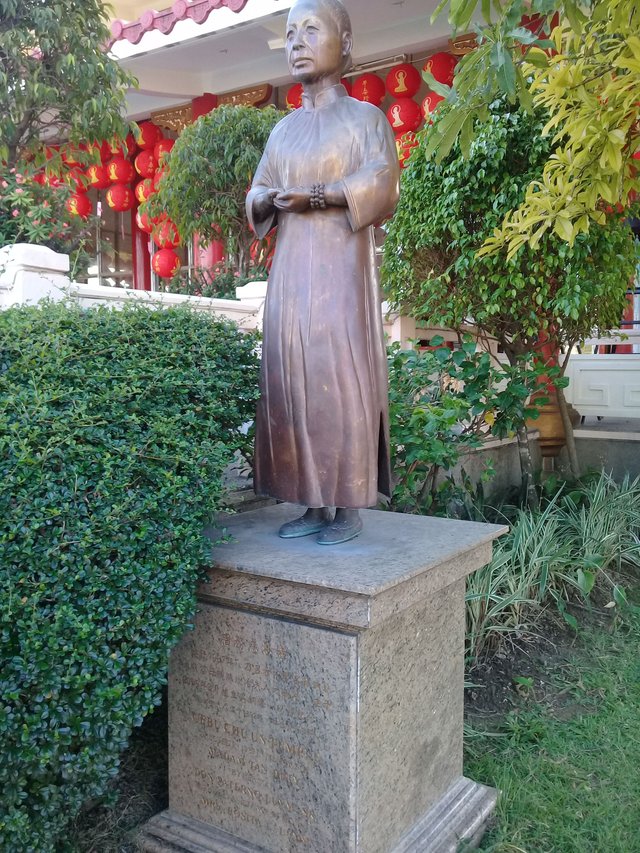
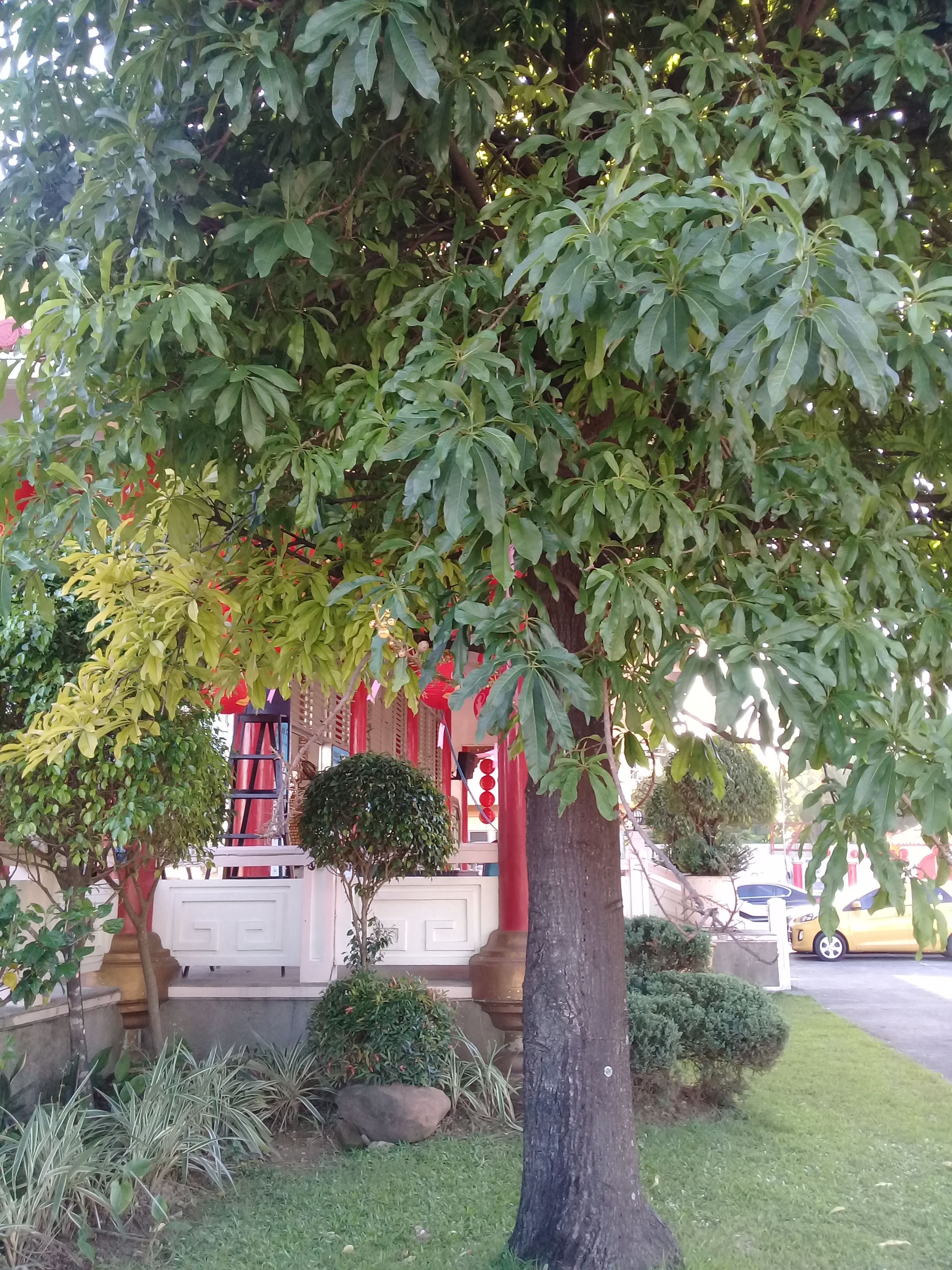
Inside the main hall is the altar and at the side is the Buddha tower. The ceiling is very colorful with red upside down umbrellas decorating it.
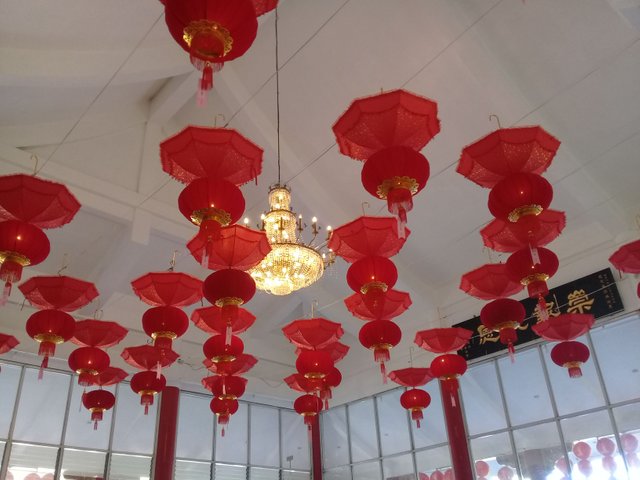
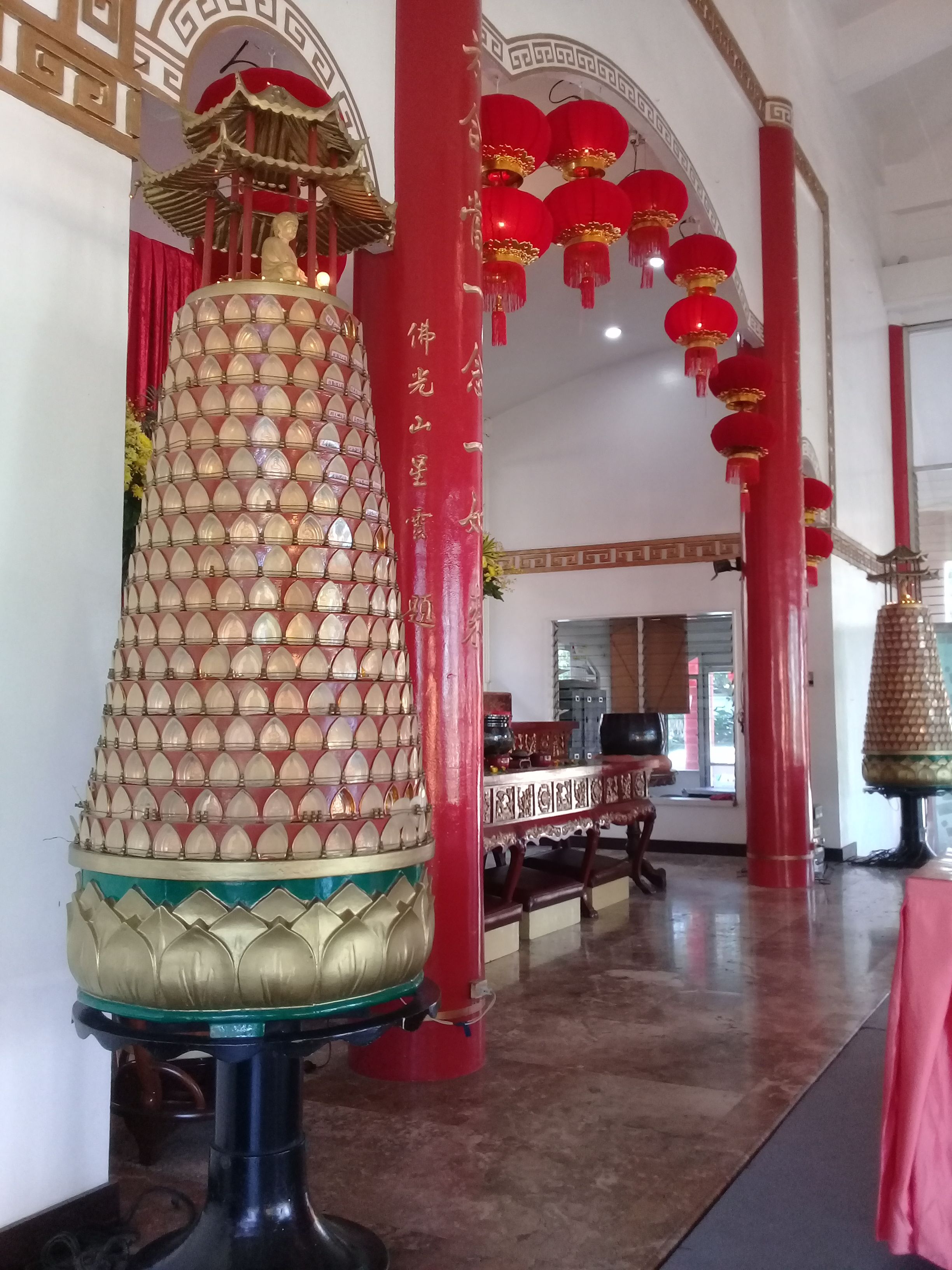
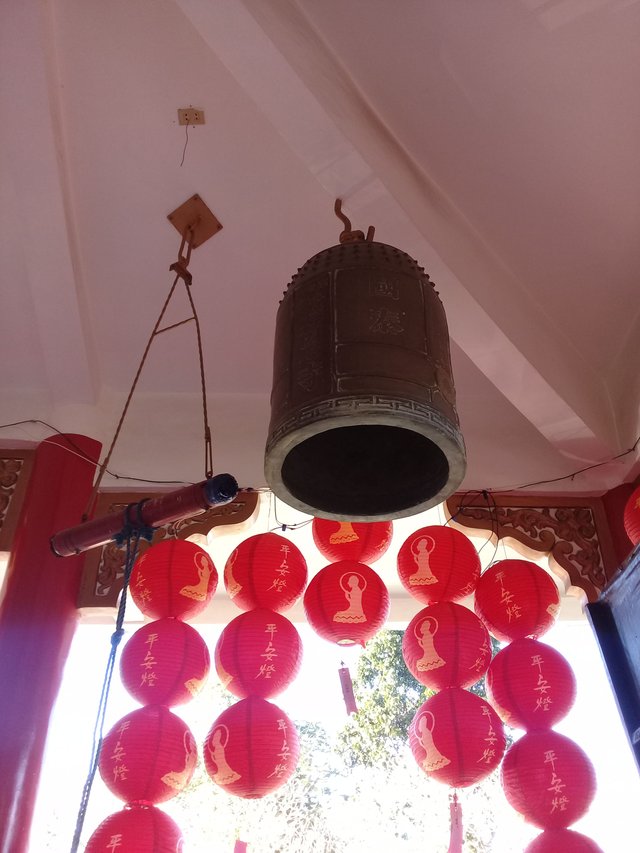
Tolling the bells is one of the ways to welcome the Chinese New Year. Also they are used to provide demarcation of time and to summon the monks to prayer.
On the side temple is where people can get to have their photos taken because there were a lot of decorations for photo opportunities of temple visitors / guests.
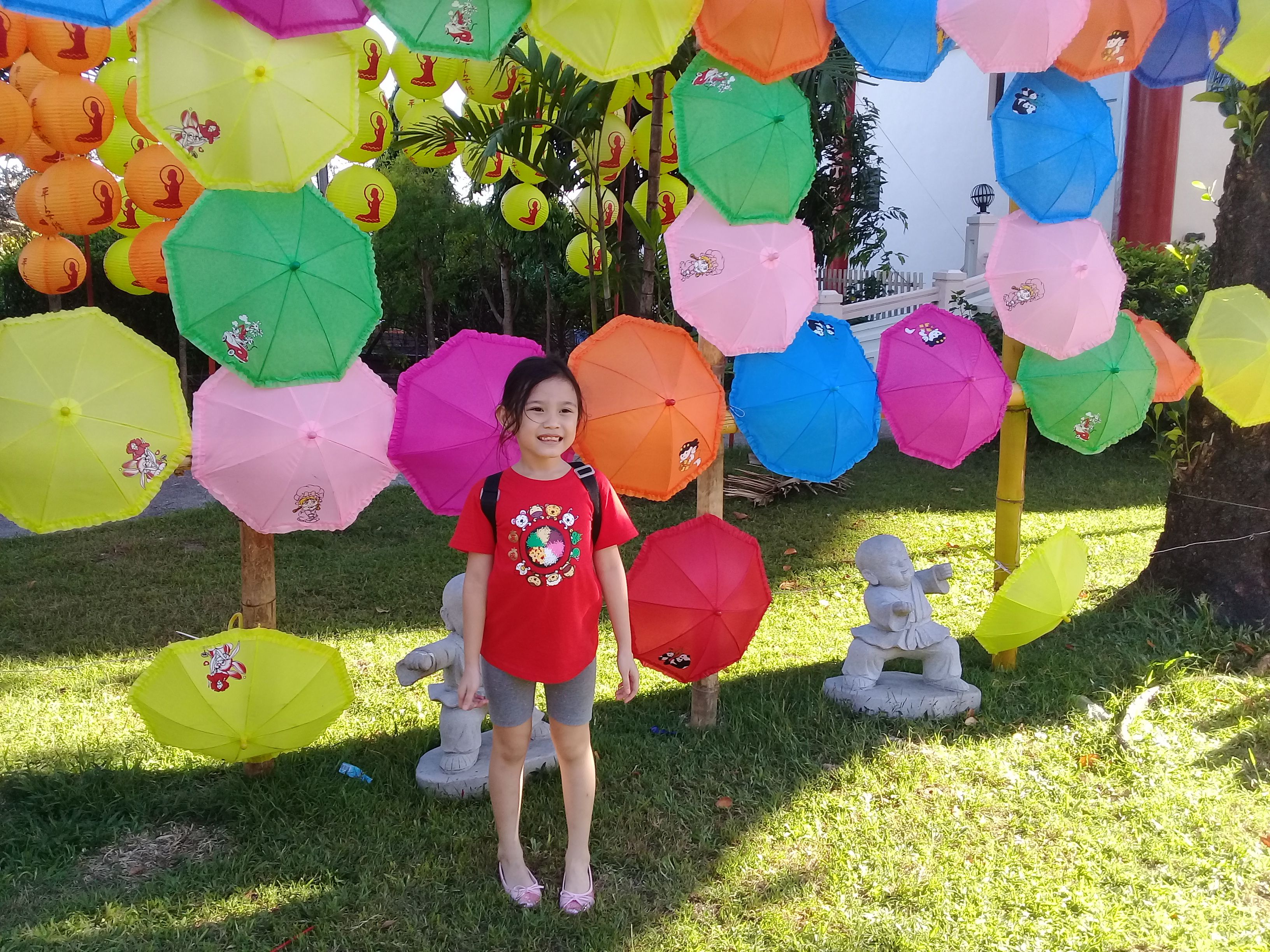
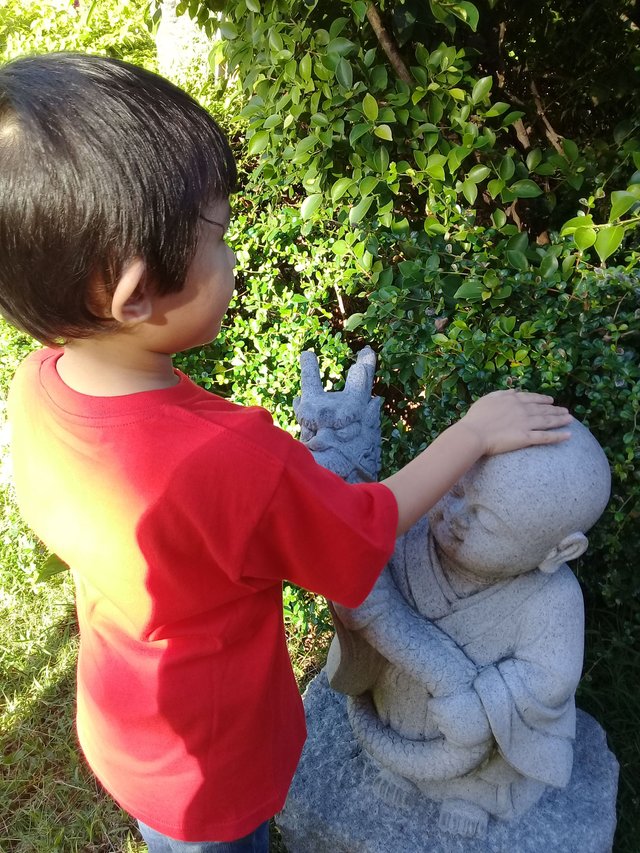
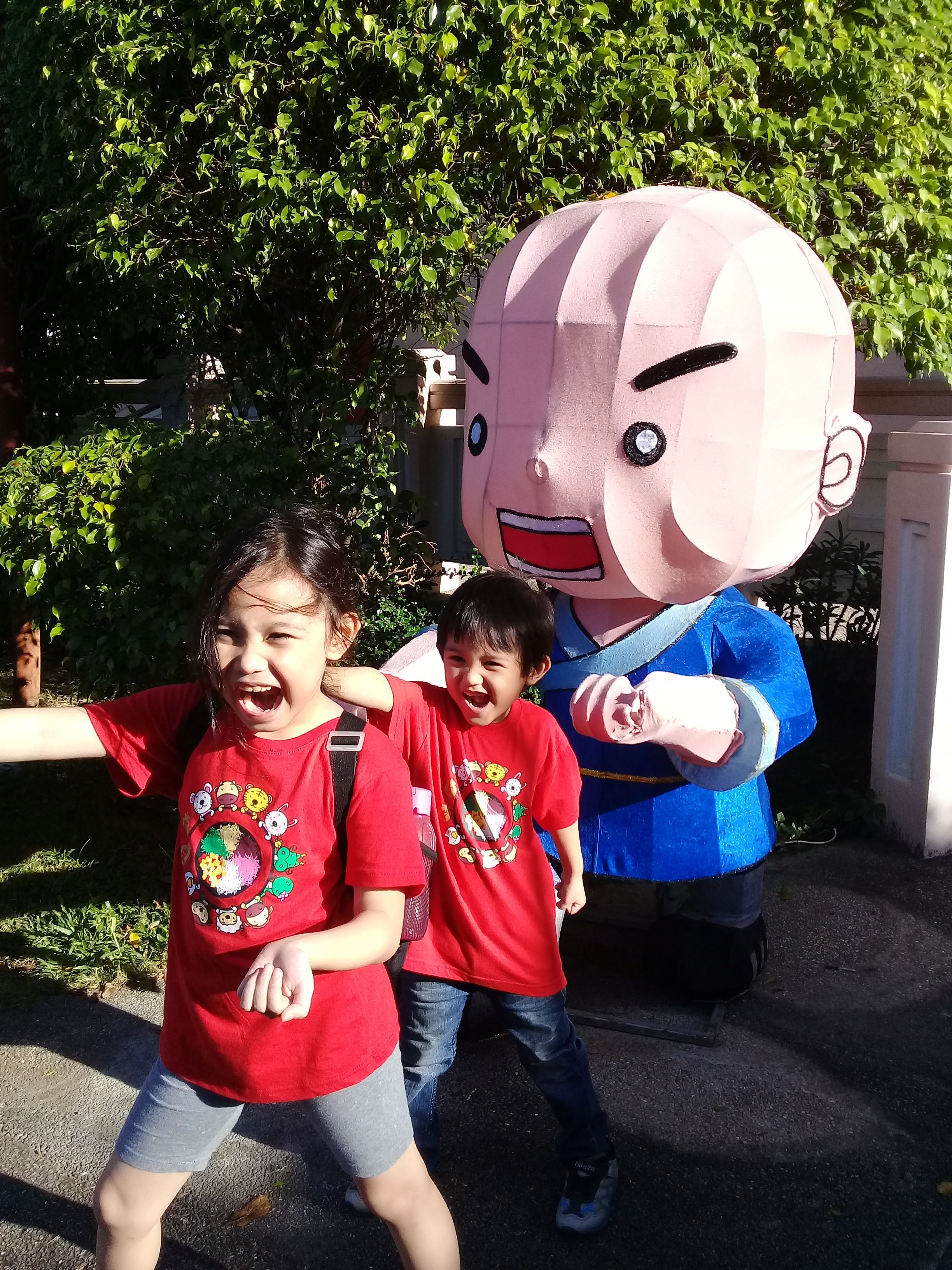
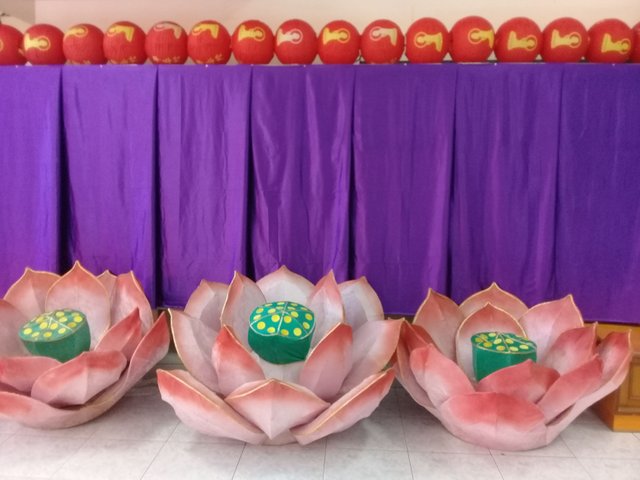
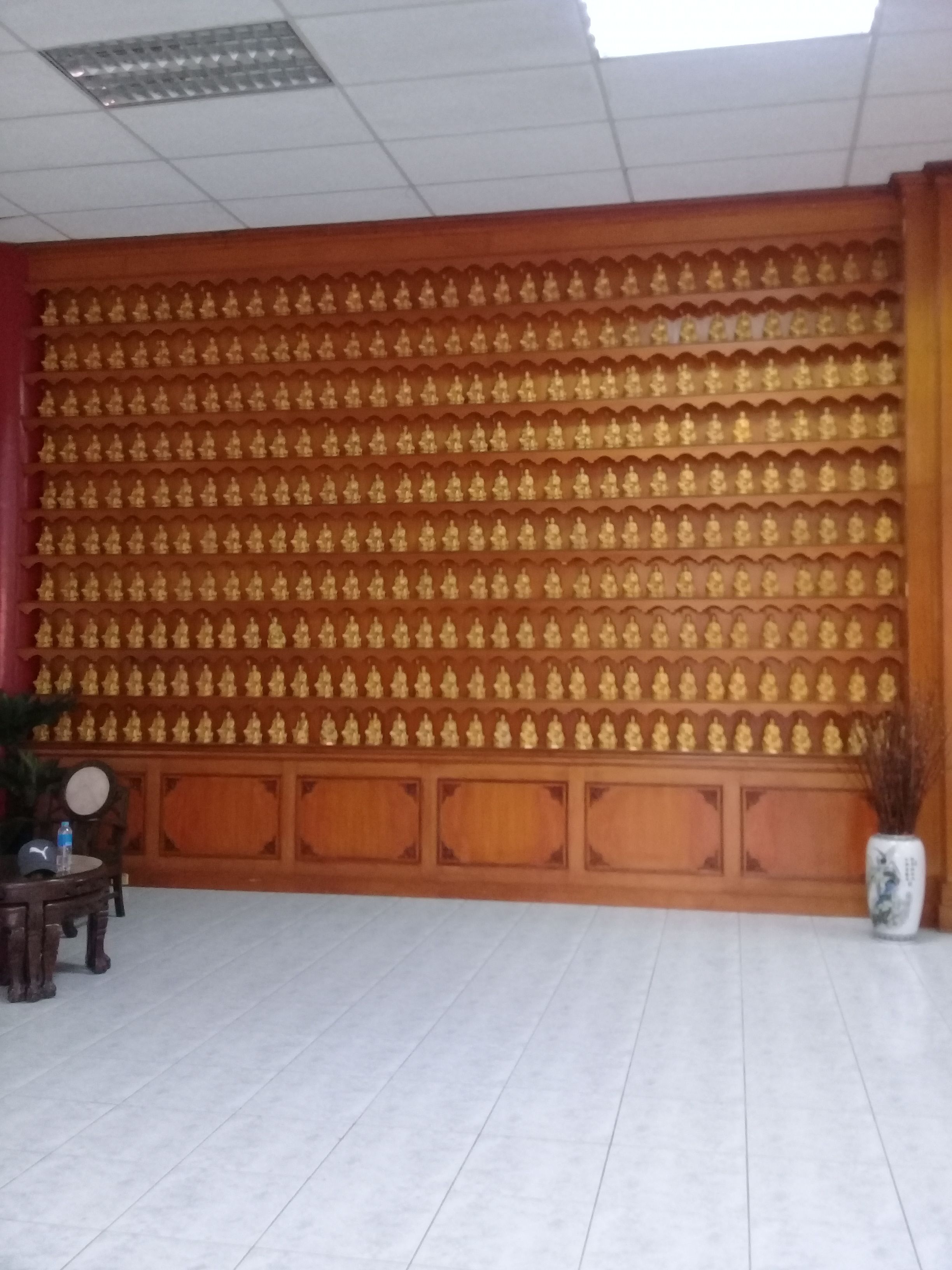
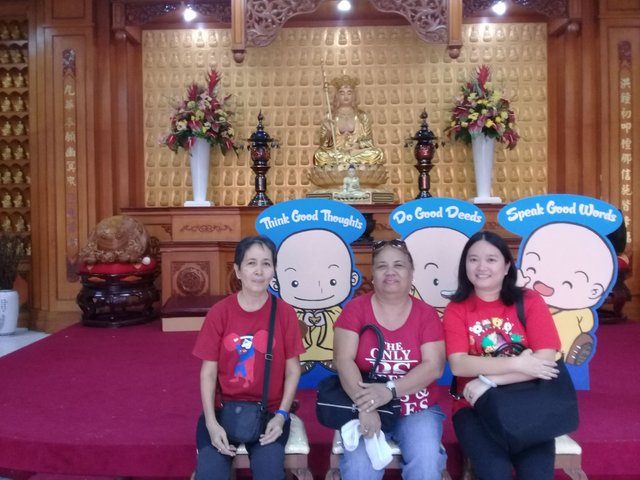
Think good thoughts. Do good deeds. Speak good words.
Located behind the main hall is a big fishpool where water lilies abound. My son was pointing at the lily pads because there was a frog sitting on it and maybe because he was playing Plants Vs. Zombies recently and still learning the strategies to defeat the zombies trying to get in from the backyard pool. Haha. The temple pool was also home to some fishes and we saw a very big Koi.
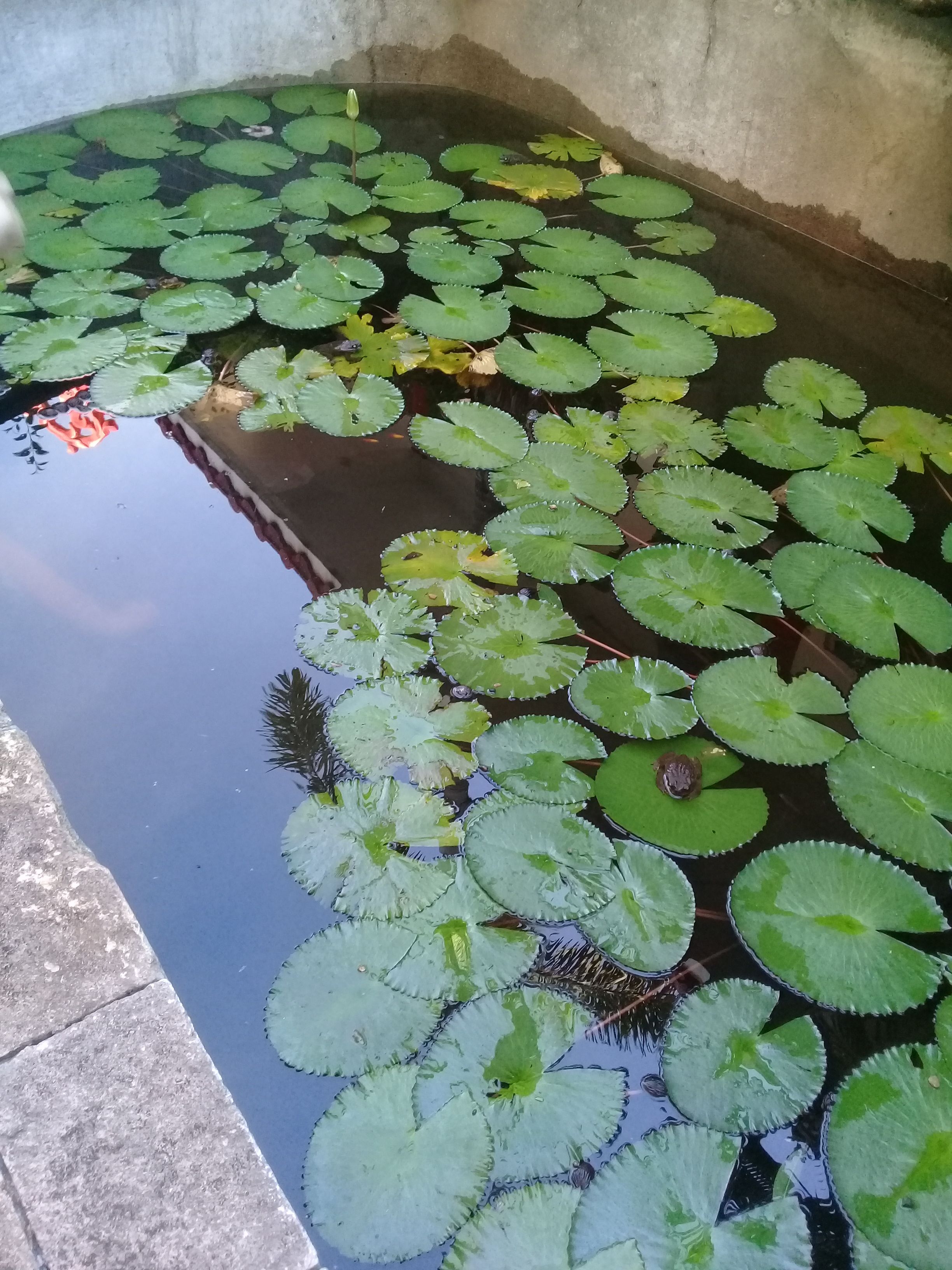
We also checked out the dining hall of the temple because we wanted to buy the traditional Chinese new year staple "Tikoy" or "Nian Gao" (more on this later) and other souvenirs we could purchase.
When we went inside, we saw a Sto. Nino (Child Jesus) statue side by side with Buddha on their altar together with food offerings and joss sticks. It is very consistent with their charitable program of helping Filipinos in times of natural calamities while respecting local religions and customs. The Fo Guang Shan monks are practicing and following Humanistic Buddhism.
Humanistic Buddhism, is a modern philosphy practiced by new religious movements originating from Chinese Buddhism. It places emphasis on integrating Buddhist practices into everyday life, and shifting the focus of ritual from the dead to the living.
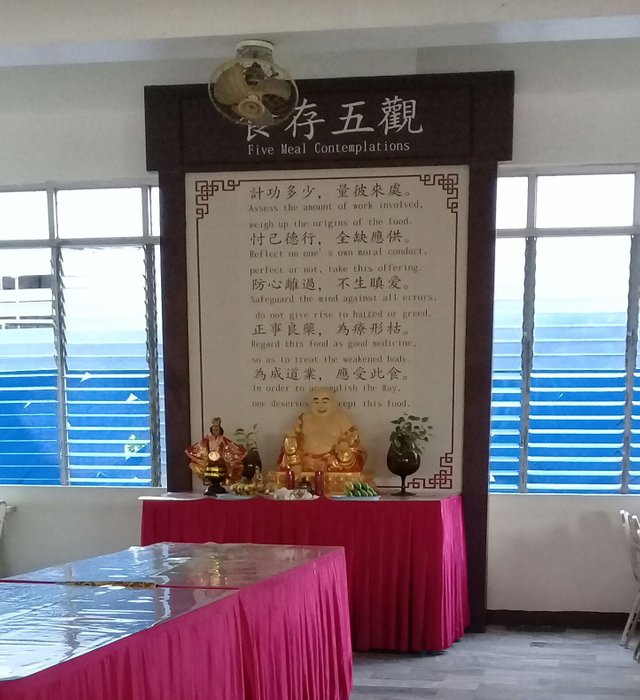
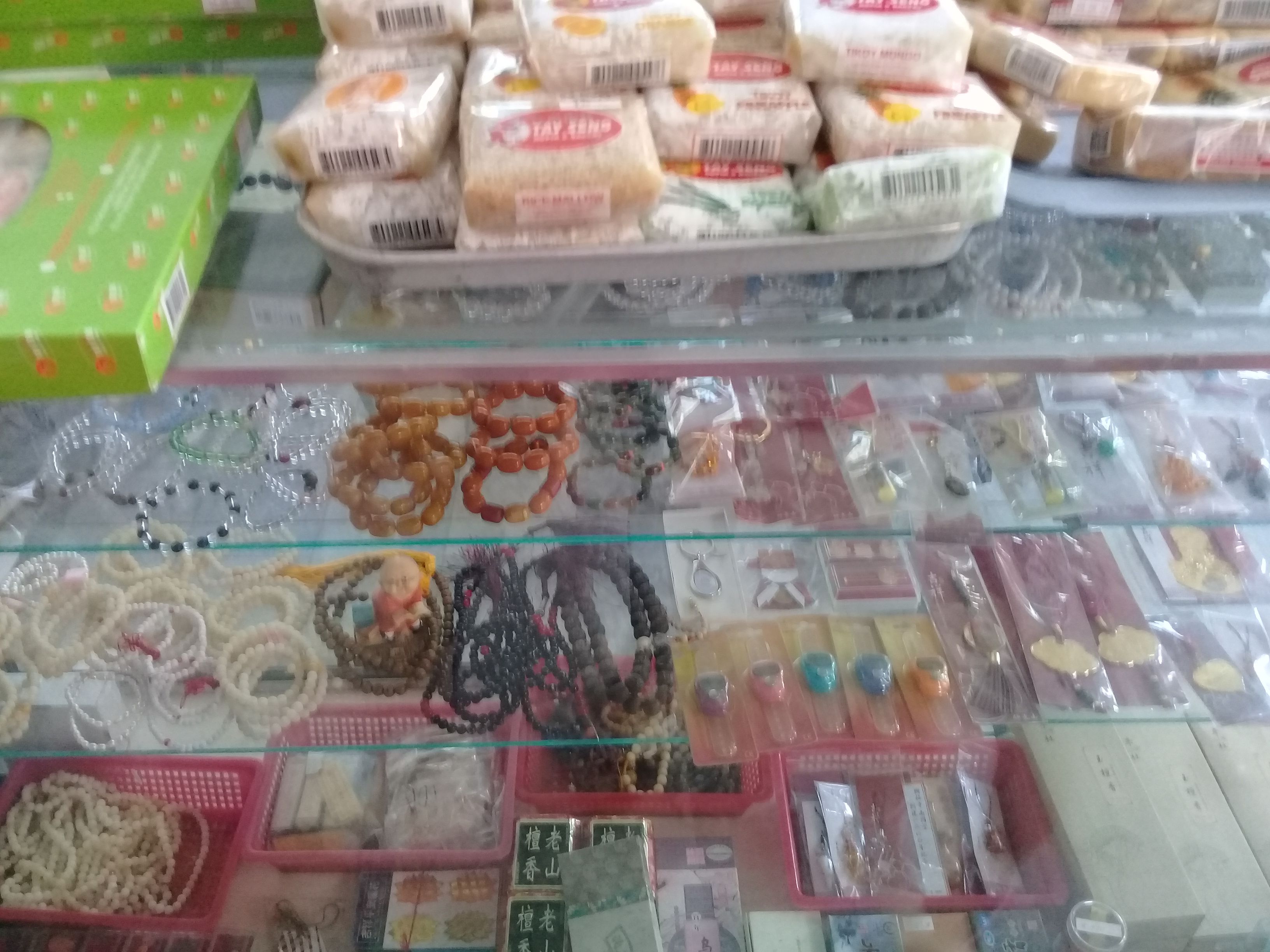
Because it was still afternoon when we finished at Chu Un Temple, we decided to visit one more. Our next stop took us to the famed Cebu Taoist Temple which is situated inside an upscale subdivision in the uptown hills of Cebu City. This is not by the way my first visit, I have visited this temple often since when I was a child and it always awes me to this day.
Our taxi dropped us off way below the main altar where the tour buses are parked. So we had to brave the 81 steps (representing the 81 chapters of Taoism scriptures) going up the main temple. My children didn't mind, because the steps were a challenge for them. I was barely able to catch my breath and my legs hurt a bit climbing with my mother and mother-in-law in tow.
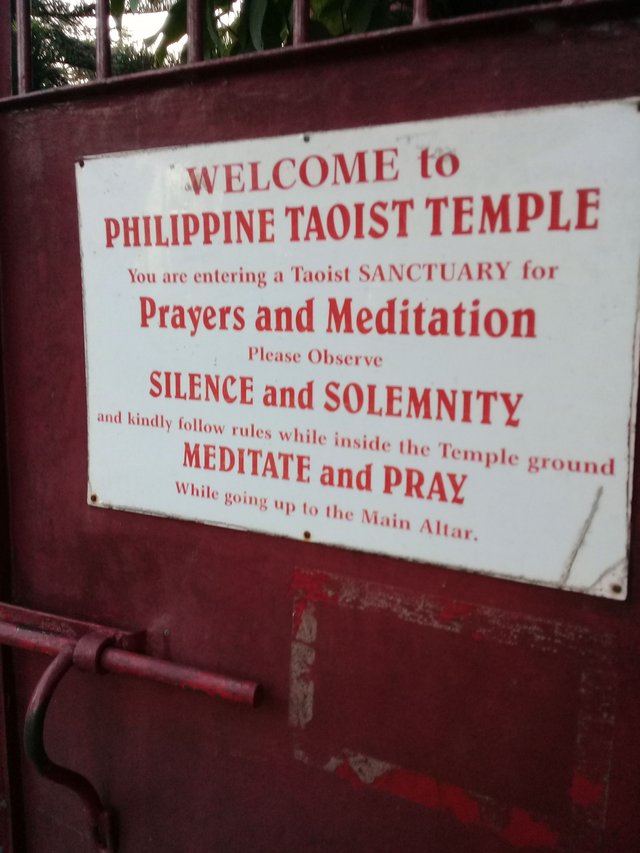
Many areas were closed off that day where one is forbidden to enter so we don't have a lot of pictures taken. Besides, they are very strict also with regards taking pictures within the vicinity of their main altar hall. I believe it is also right because you wouldn't want anyone take a picture of you while praying. I could still remember when I was a small child and my grandmother took me here, we used to eat sweets and dine at the hall right below the main altar hall, but I saw this time that there was a no entry sign for the steps going there. It seemed that during the Chinese New Year's day, all people were expected to go to the main temple only. Even then, I still took some pictures of the sights I saw from where we were. And it's breathtaking!
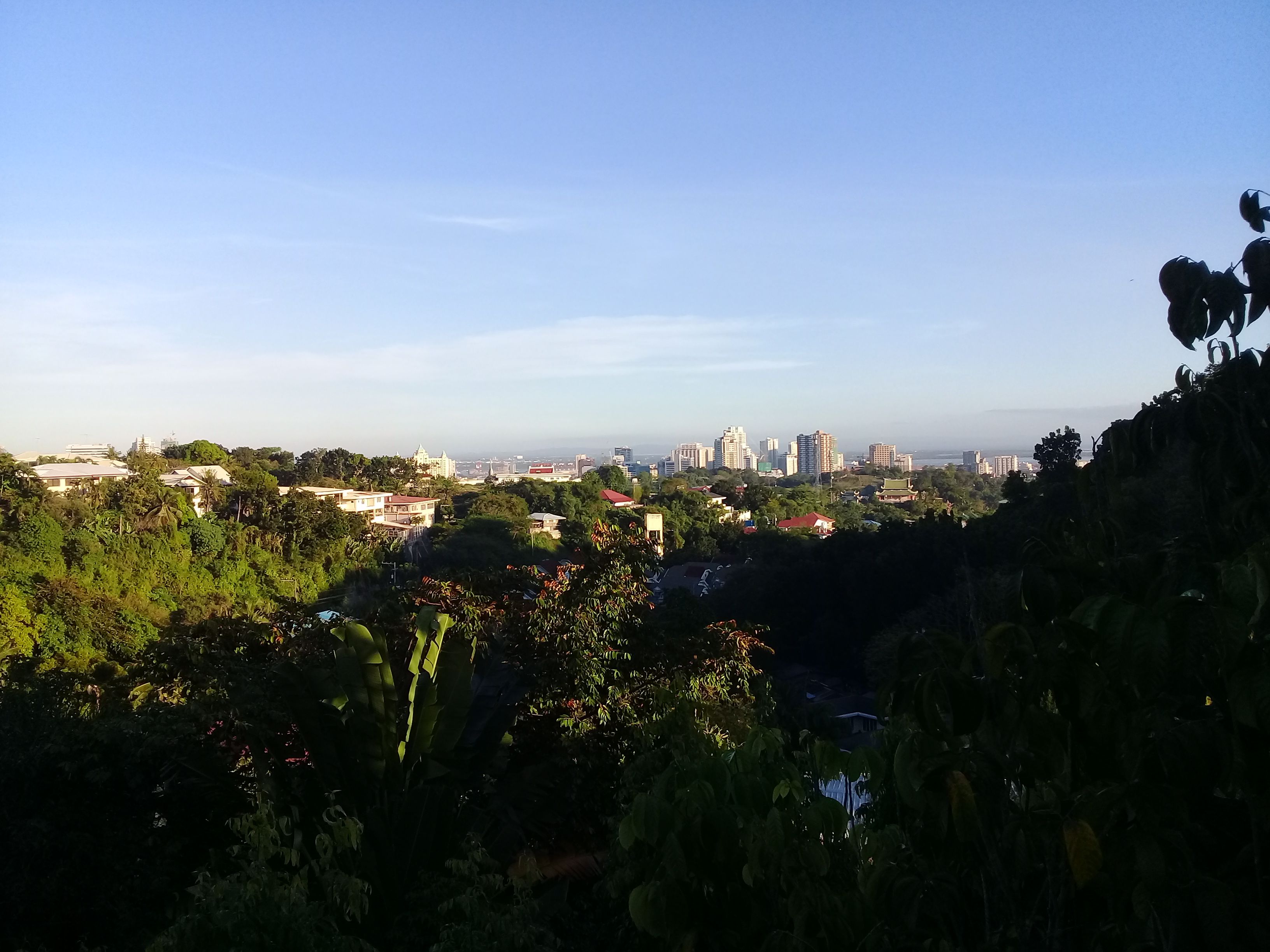
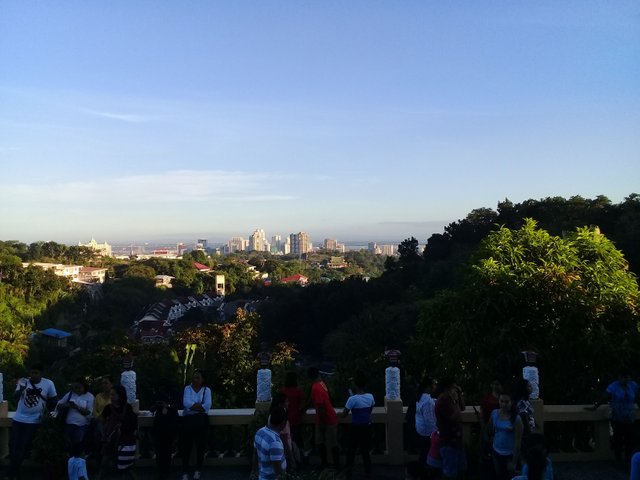
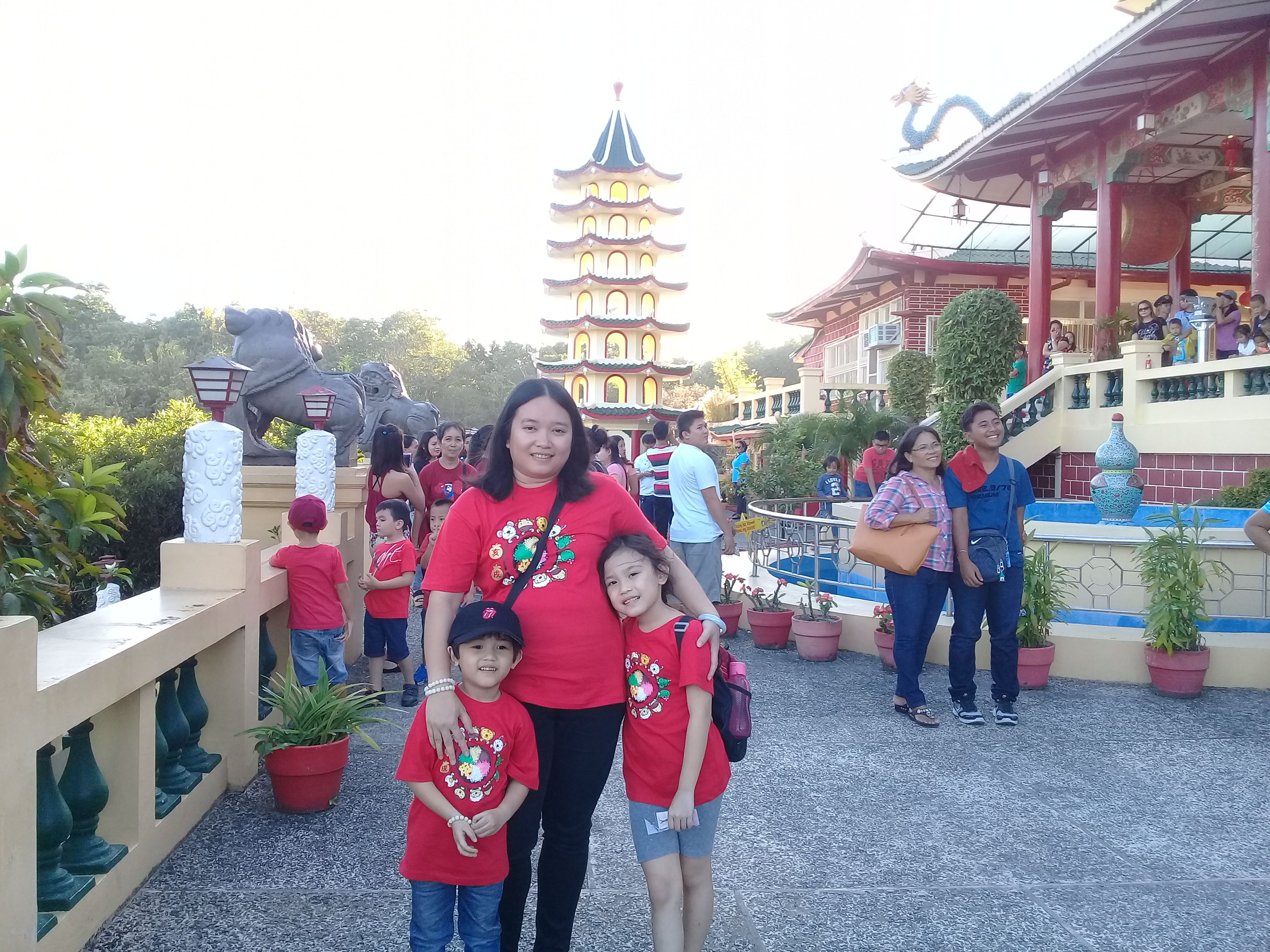
And... We had to walk after. But it was fun!
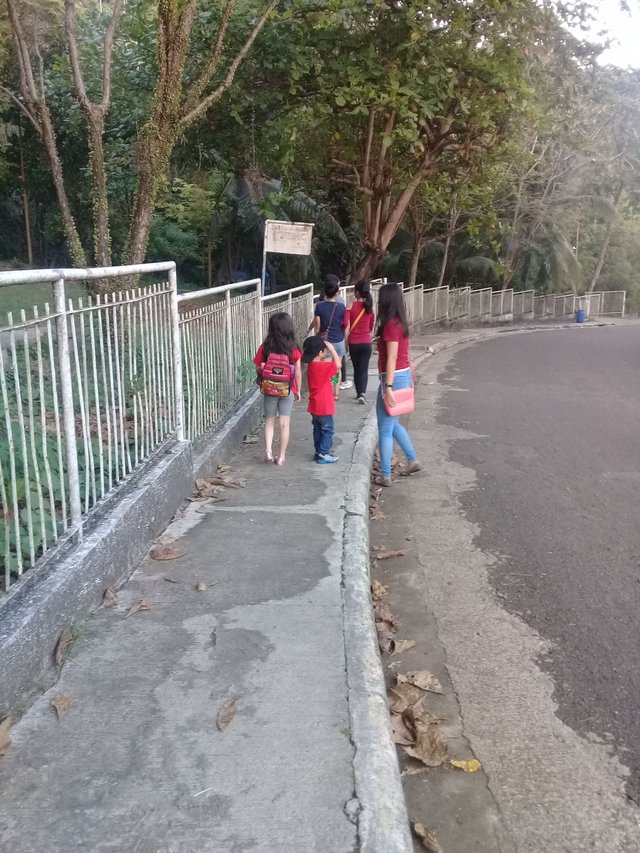

We ended our Chinese New Year with something sweet! We visited the newly opened Sol's Halo-halo Banawa branch which is very near our place, after having dinner at Jollibee Guadalupe of course.

The Filipino-Chinese community here in Cebu or anywhere in the Philippines is very vibrant, traditional and cohesive. One can see it during these festive times. So to celebrate the new year, let me also share with you, my Steemit friends, 8 Filipino-Chinese traditions during the Chinese New Year. I pick 8 because this number is very auspicious. 8 or Ba in Chinese has similar pronounciation as Fa which means wealth or fortune. Who wouldn't want to be wealthy or fortunate, right?
So friends, here they are:
1. Dragon Dances / Lion Dances
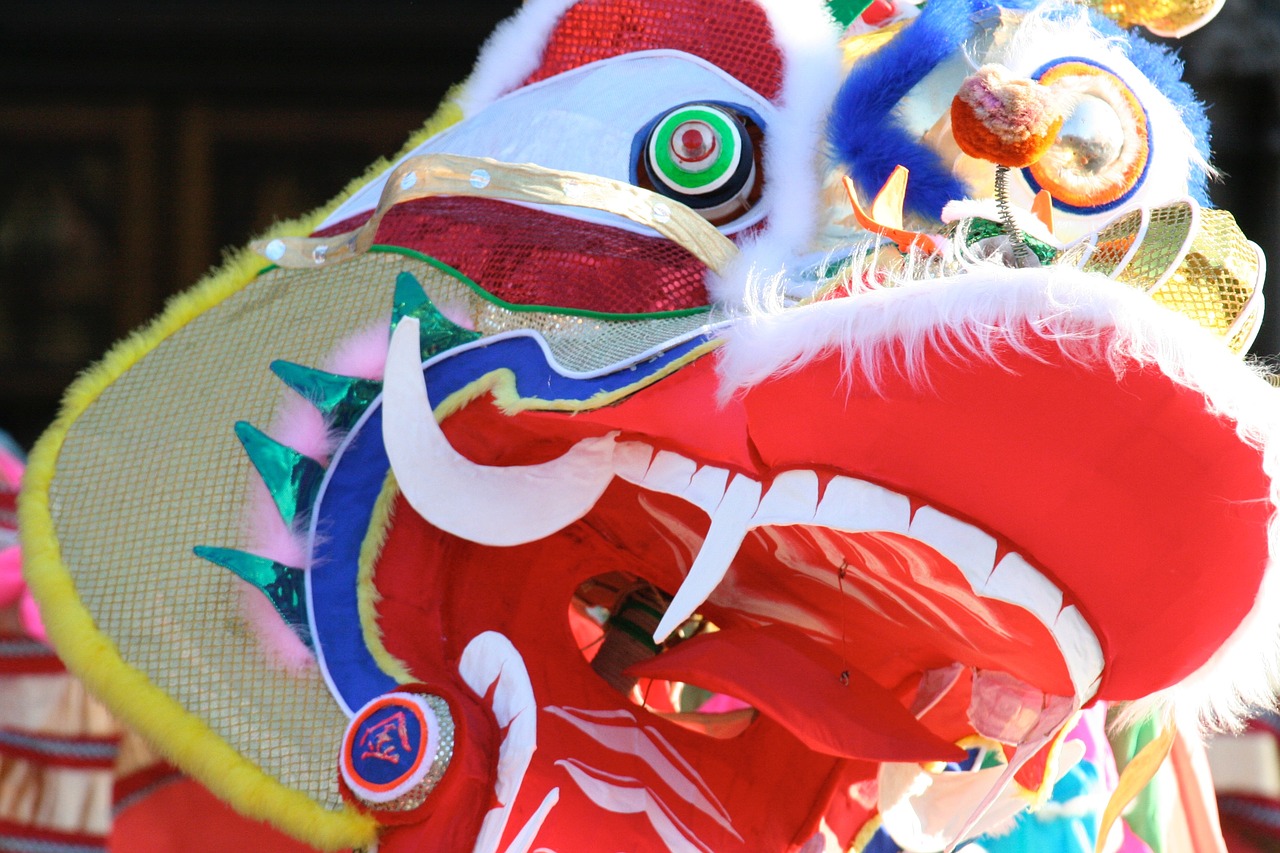
Both the dragon and lion dances are performed to represent great power, auspiciousness, fertility and wisdom. They snap up red envelopes or red slips of paper hanging from lanterns and store fronts to symbolize offerings and prayer intentions made for prosperity (for the dragons) and protection from evil spirits (for the lions). To differentiate the two, dragon dances are performed by eight people holding the dragon up on sticks, while the lion dances are usually done by two people inside a lion costume with one person holding the head and the other the tail.
2. Red Envelopes. Commonly known as Ang pao or Hong Bao
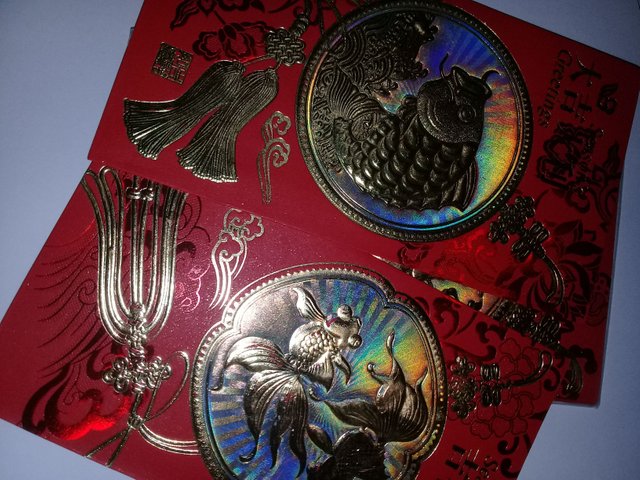
Notice the design? These envelopes are typically stuffed with fresh new bills which will be given to young people and also the unmarried, usually for good luck. The amounts will vary according to the giver's capacity but must always be an even number, because odd numbered amounts are predominantly given to bereaved families at funerals.
3. Clearing Debts.

To start the year clean, and debt-free. Nuff said.
4. Fireworks.
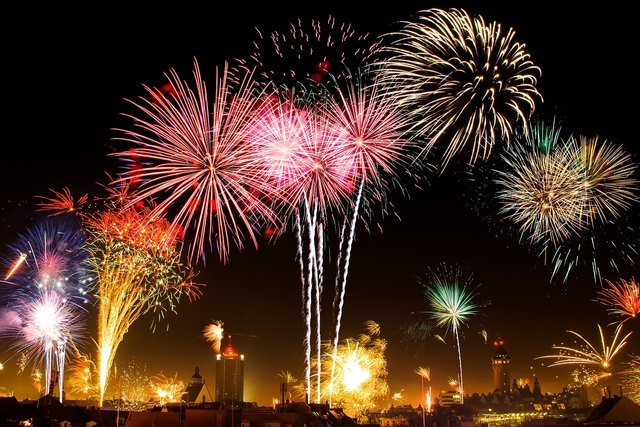
The Chinese typically believe that firecrackers scare off evil spirits. The louder and flashier the fireworks display is, the more effective it is in doing that and also in ushering in prosperity to one's home or place of business for the coming year.
5. Tikoy or Nian Gao
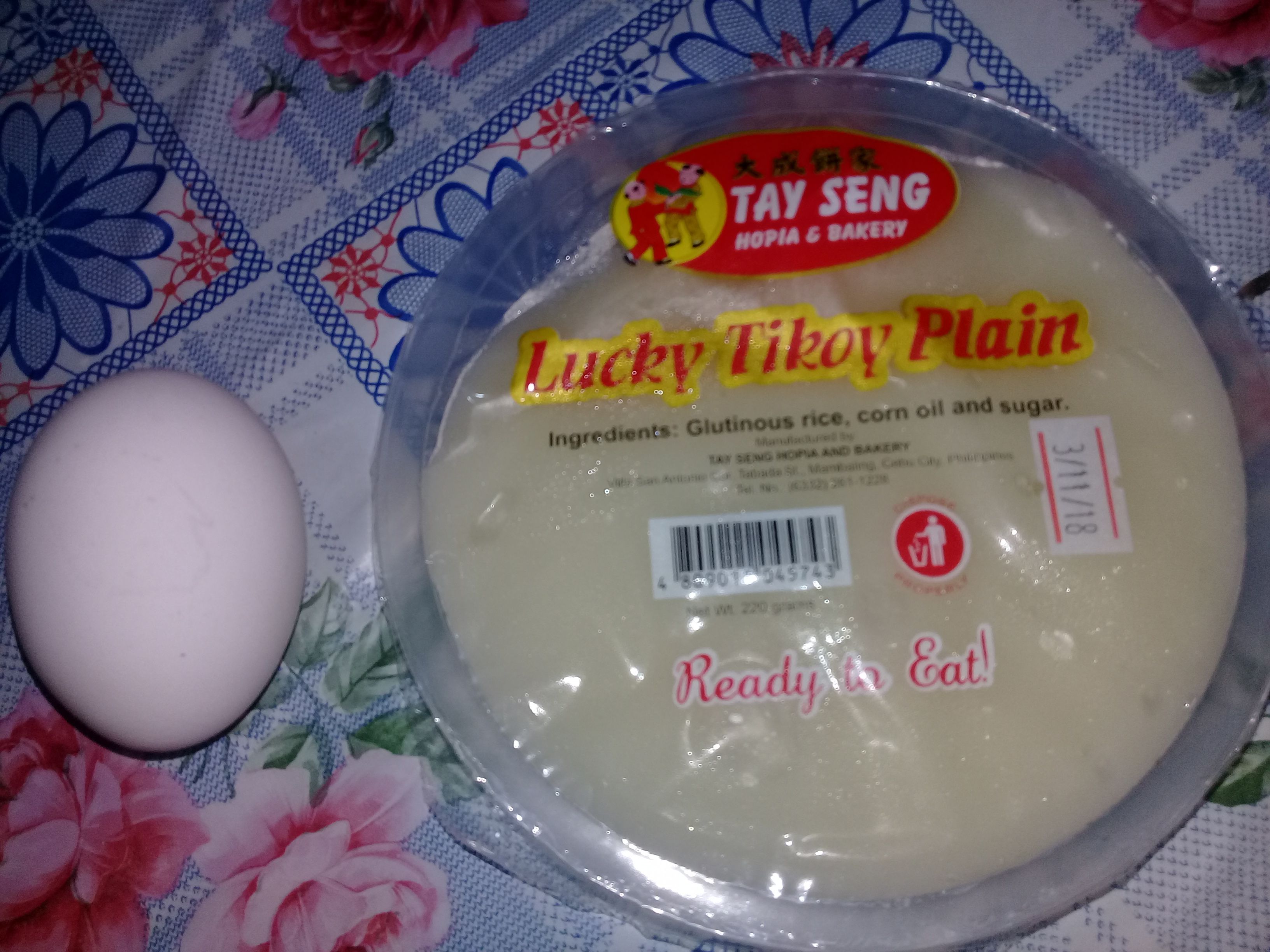
Tikoy is a glutinous rice cake that is said to be good fortune to eat during the the Chinese new year's eve and the days following so.
The best way to have them is to thinly slice the tikoy, dip them in egg batter and fried into gooey tikoy egg fritters. Mmmmm..So yummy...
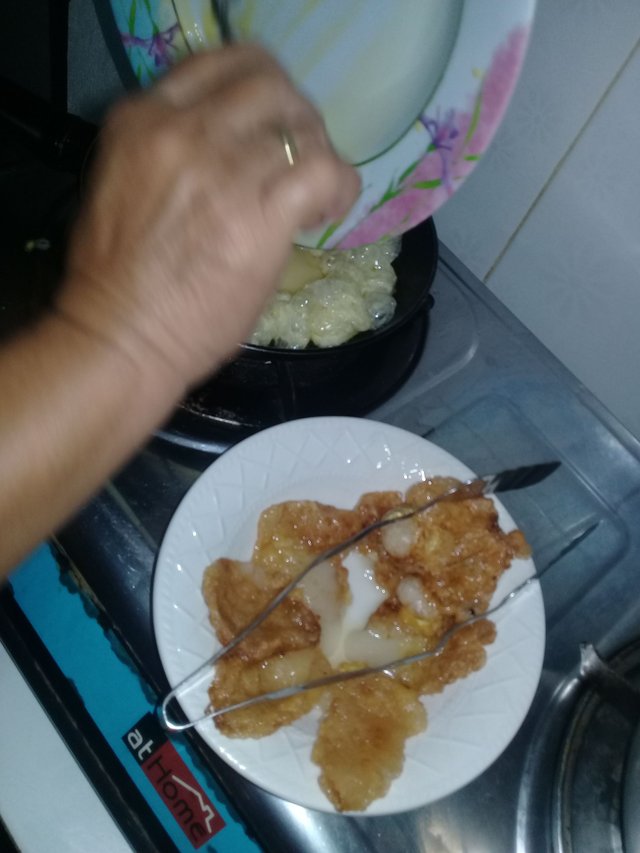
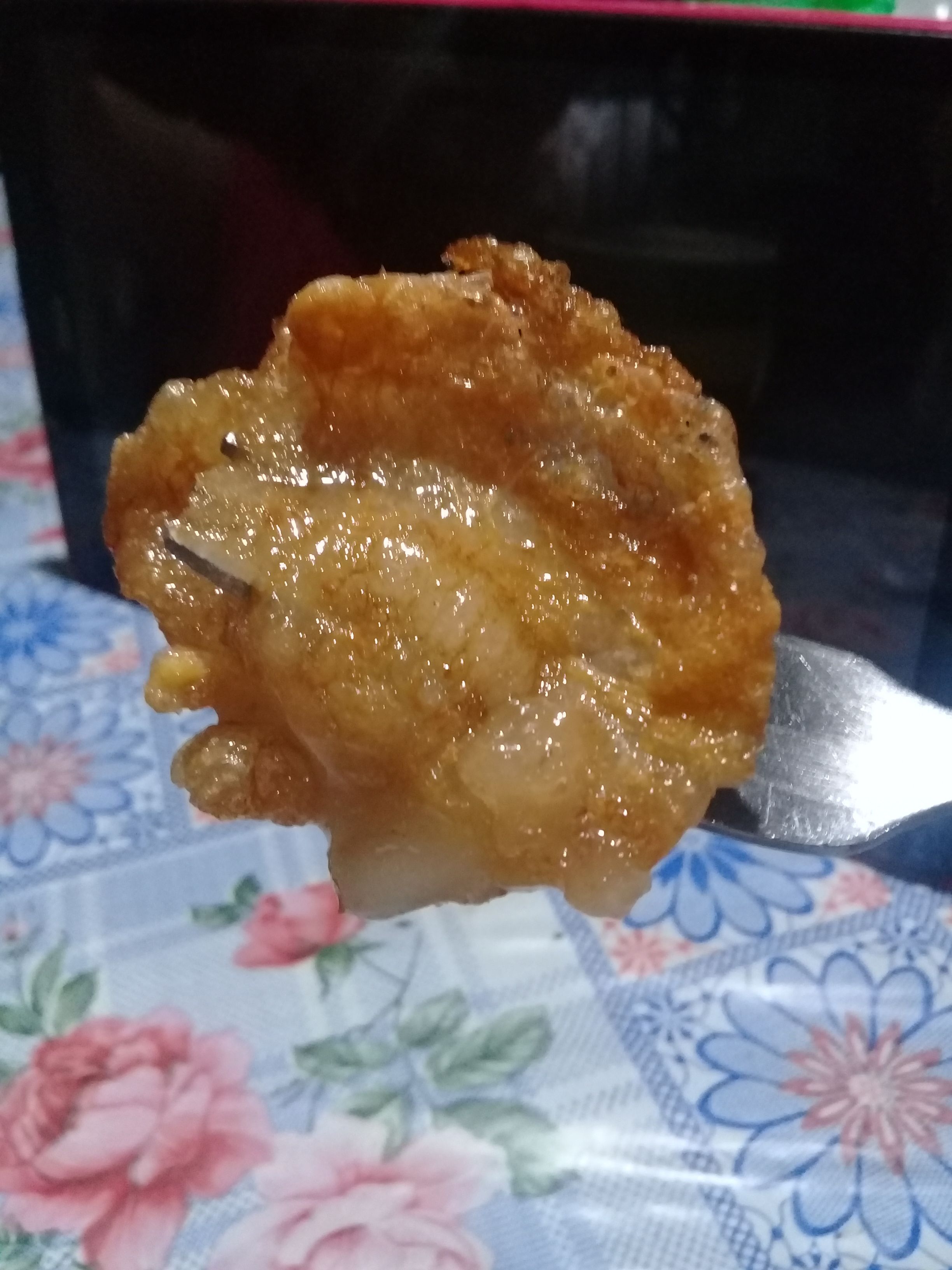
6. Wearing Red
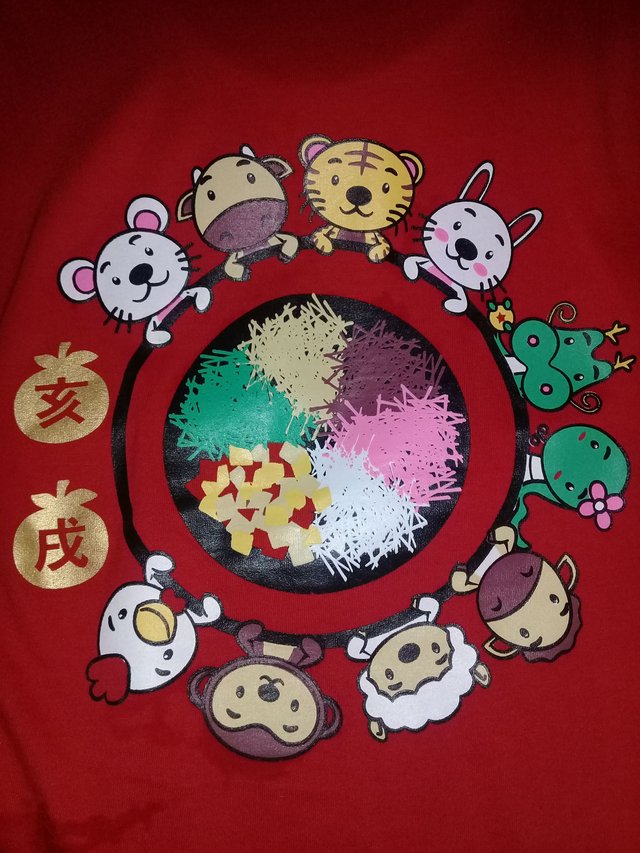
Red is considered to be the luckiest color for the Chinese. It symbolizes good luck, happiness, fortune, and energy. That is also why most decorations during the Chinese New Year is in the same hue.
7. New Year's Eve Dinner
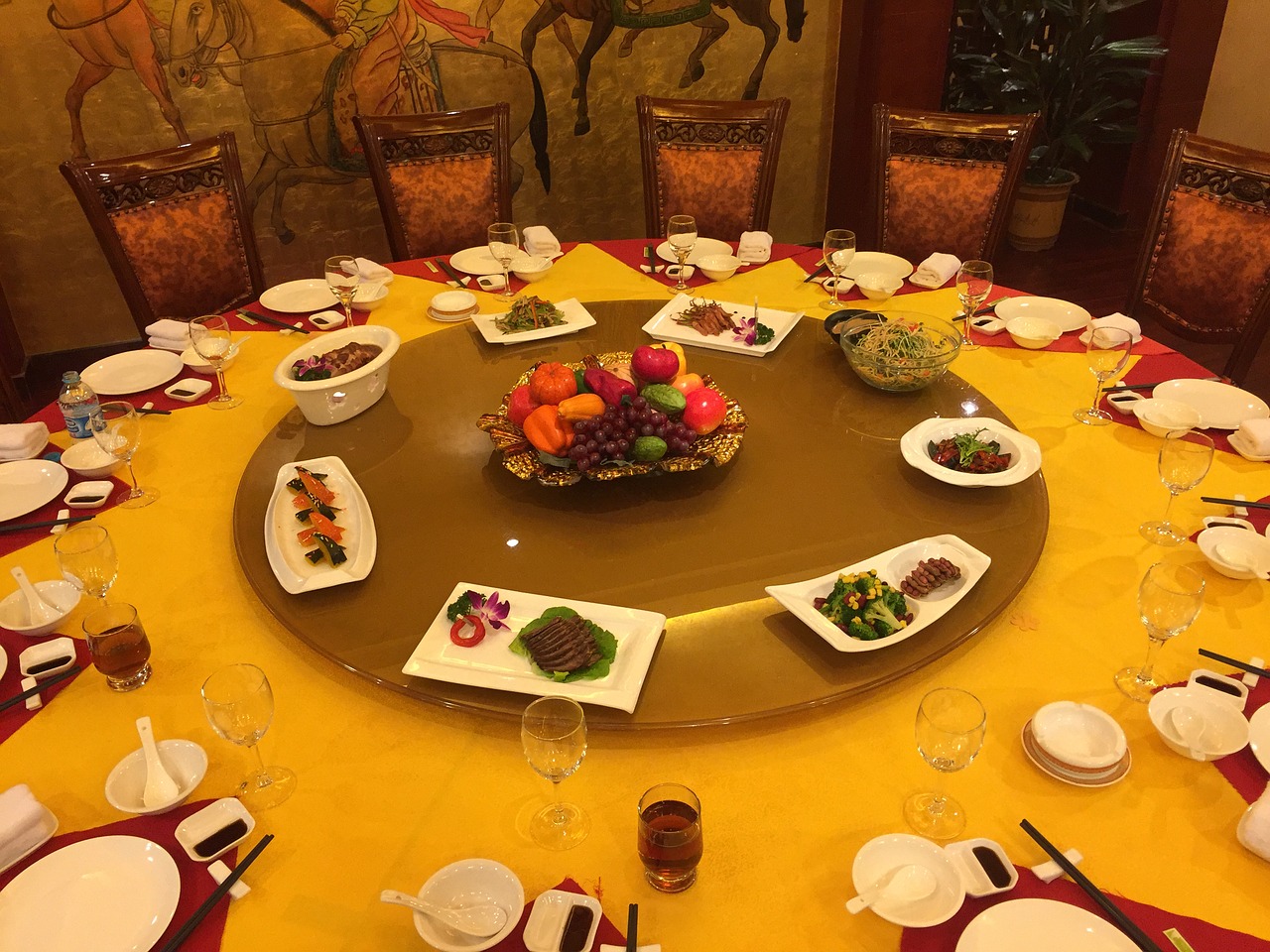
Food is an essential part of every celebration. All the dishes on the table are chosen for a deeper meaning: Noodles to signify long life for everyone, fish stands for good fortune and surplus, dumplings and sweets mostly round in shape signify coins or wealth. And the ever present sticky round tikoy, metaphorically, the glue that would bind the family together for eternity.
8. Temple Visits
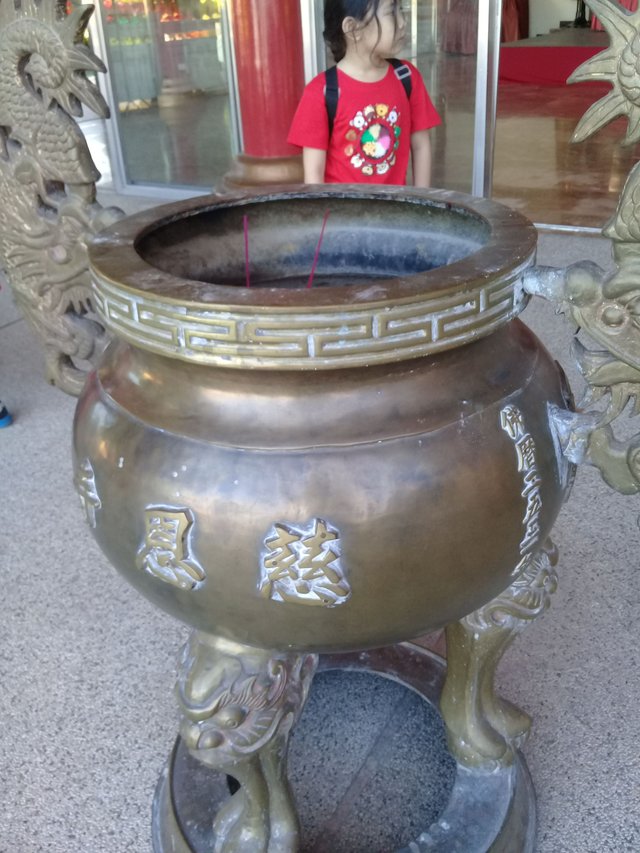
Families bond in prayer and meditation while visiting the nearest Chinese temple within their vicinity. Some make offerings to the temple altars whether in kind or monetary. But most visits wouldn't be complete without writing wishes and intentions on paper and burning or hanging them as offerings.
There you have it. I hope you had fun and gained insights into the wonderful culture of the Filipino-Chinese community here in the Philippines.
I believe, that it is essentially the same as how people from other cultures would celebrate a new year. Being grateful and reflective for the year that was, and being hopeful for the new one to come, and thankful for the chance to start anew.
Every new year is a new beginning. For everyone.
@raquelita
Wala ko ka witness sa ilang celebration kay naka out of town mi sa akong husband..pero dghan jud chinese or tsinoy dre sa cebu mga businessman. Cute kau imong mga babies sa katong naay chibi
We had fun @junebride throuhout the whole day. I wanted to give the kids something to look forward to every CNY. Thank you so much for dropping by as always. Regards.😀
Wonderfully written and gives so much information about the Chinoy culture that is very much present in the Philippines.
I really appreciate the effort.
My pleasure @maverickinvictus. I appreciate your kind words.😀
upvoted @raquelita. nice post...
hala, salamat gyud kaayo @steeman220 😀
mupalit ko ug Ang Pao kada Christmas kay presentable if ihatag sa inaanak malipay na sila maski gamay ra gud ang sulod ahaha. nice post @raquelita
cute ang shirt ninyong tulo:)
mao gyud @orhem nice gyud na nga idea😀
This post has received a 0.24 % upvote from @drotto thanks to: @banjo.
thank you @drotto.
I wasn't able to celebrate the Chinese New Year :( But you guys looked like you had such a great time! Great post ate @raquelita :D
hello there @pizzanniza! Don't worry it runs 'til the Lantern Festival, which falls on March 2😊 There will be sky lanterns then. thank you for stopping by.
Upvottedd @raquelita i dont know much about chinese culture... This defintely is a nice post to read....
hi @johnrel. nice having you here. I'm glad you learned something😀
Lingawa sa mga chikiting. Karon pa ko nga pwd d i na lutoon ang tikoy 🤣😂.
Nice post po 👍
Hi @ayingroxie. thanks for stopping by.